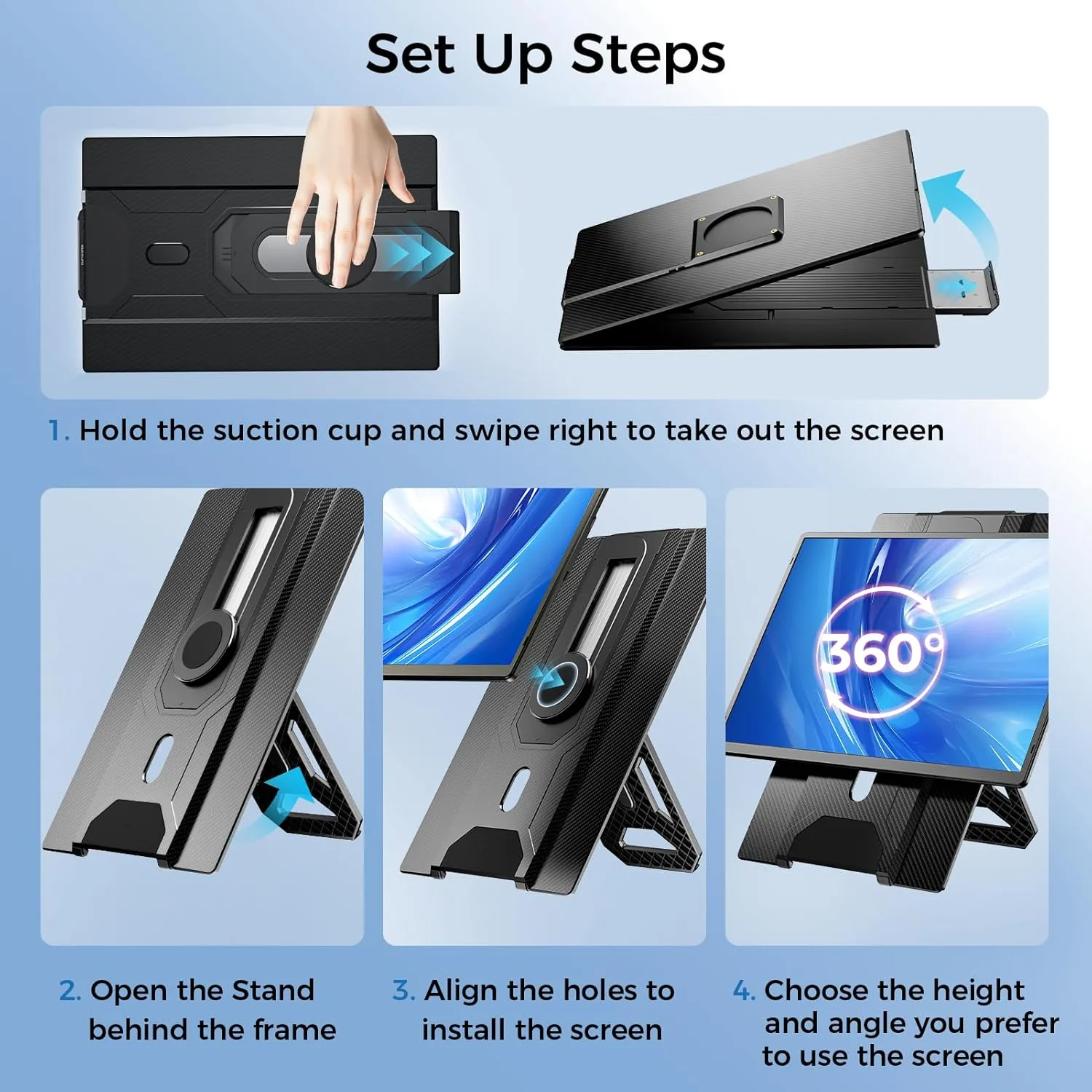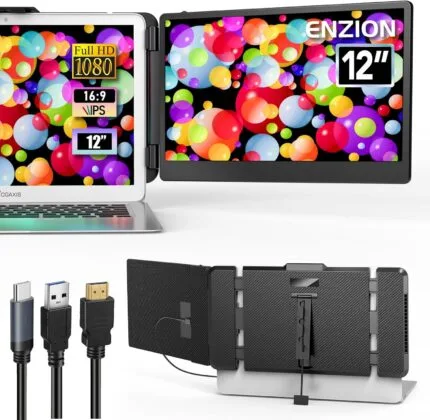
Blog&News
Is portable display a waste of money?

Is a Portable Display Really a Waste of Money? Let’s Settle This
Picture this: You’re packed for a work trip—laptop? Check. Charger? Check. That sleek portable monitor you impulse-bought? Hmm. Is it just dead weight, or could it be your secret productivity weapon? Let’s cut through the hype and find out.
What Even Is a Portable Monitor?
A portable monitor is a featherweight, plug-and-play screen that connects to your laptop, phone, or gaming console via USB-C or HDMI. Think of it as your laptop’s sidekick—adding screen real estate without the bulk of a traditional display. Most weigh under 2.5 lbs, slip into a backpack, and fire up in seconds49.
The “Waste of Money” Argument—Where It Comes From
Critics aren’t totally wrong. Here’s why some buyers regret their purchase:
- Pricey for the specs: A $250 portable monitor often has lower brightness, resolution, or color accuracy than a same-priced desktop display912.
- Niche use cases: If you only work at a desk, a bigger, cheaper desktop monitor makes more sense6.
- Gimmicky features: Some models tout 4K or HDR but can’t deliver usable brightness (e.g., 250 nits struggles outdoors)712.
But before you write them off, let’s flip the script.
When a Portable Monitor Isn’t a Waste (Spoiler: For Most People!)
🚀 For Digital Nomads and Hybrid Workers
Remote work isn’t fading—it’s exploding. Studies show dual screens boost productivity by 42%, and portable monitors let you recreate that setup anywhere: coffee shops, airport lounges, hotel rooms811. No more frantic tab-switching between Zoom calls and spreadsheets!
Pro Tip: Look for USB-C power delivery (like the HP E14 G4). It powers the screen and charges your laptop through one cable—no outlet hogging1113.
🎮 For Gamers and Media Bingers
Gaming on a tiny laptop screen? Oof. Portable displays like the ASUS ROG Strix XG17AHPE (240Hz refresh rate) or Arzopa Z1FC (144Hz) turn travel into a legit gaming session. Hook it to a Steam Deck or Switch, and you’ve got immersive play without a TV.
🎨 For Creatives on the Move
Photographers, videographers, and designers: Previewing shots on a camera’s 2-inch LCD is torture. A color-accurate portable monitor (like the ViewSonic VX1655-4K-OLED) acts as a pocket-friendly client proofing station.
💼 For Business Warriors
Imagine pitching to a client with a crisp second screen instead of huddling around your laptop. Touchscreen models (e.g., Lenovo ThinkVision M14t) even let them sign contracts or sketch ideas live35. Power move.
The 3 Times It Might Be a Waste
- You never leave your desk: If your “commute” is from bed to a home office, invest in a 27-inch desktop monitor instead.
- You bought the wrong type: Gamers don’t need 4K OLED; travelers don’t want a 17-inch brick. Match specs to your lifestyle.
- You skimped too hard: A $50 no-name screen with washed-out colors? That’s a paperweight. Stick to tested brands like Arzopa, ViewSonic, or ASUS.
How to Avoid Buyer’s Remorse: A 60-Second Checklist
Before swiping that card, ask:
- What’s my main use? (Gaming? Office work? Photo editing?)
- How bright? → 300+ nits for outdoor/cafe use.
- How portable? → Under 2 lbs and 0.5” thick.
- Connectivity? → USB-C + HDMI for flexibility.
- Battery or no? → Built-in batteries add weight but free you from outlets (great for flights).
The Verdict: Dump It or Deploy It?
Portable monitors aren’t wasteful—but they’re not for everyone. If you’re always on the move, juggle multiple apps, or crave big-screen entertainment anywhere, they’re a game-changing investment. For deskbound users? Stick to a traditional display.
Bottom line: The magic is in matching the tech to your life. Get that right, and you’re not buying a screen—you’re buying back time, focus, and sanity.
Frequently Asked Questions
1. Can I use a portable monitor with my phone?
Yes! If your phone supports USB-C video output (most Androids, newer iPhones with adapters), just plug and play. Perfect for scaling up Netflix or editing docs.
2. Do portable monitors drain my laptop battery?
Some do—but models with USB-C Power Delivery (like Dell Pro 14 Plus) can share power. For long sessions, use a monitor with a built-in battery (e.g., ASUS ROG Strix).
3. Are there portable monitors for MacBooks?
Absolutely. Look for USB-C/Thunderbolt support and P3 color gamut coverage. The Cevaton S6 pairs beautifully with Mac aesthetics.
4. Can I game competitively on a portable monitor?
Definitely. Choose high refresh rates (144Hz+) and adaptive sync (FreeSync/G-Sync). The Arzopa Z1FC (144Hz) is a budget esports darling.
5. Do they work with consoles like PlayStation or Switch?
Yep—connect via HDMI. Portable monitors like the ViewSonic TD1656-2K turn hotel rooms into instant gaming hubs

